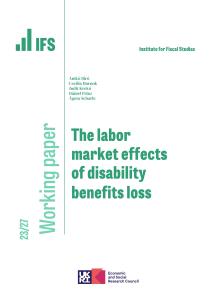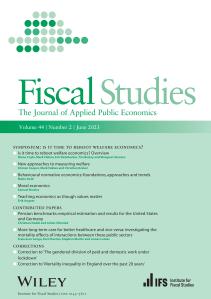In a new report published today by the Institute for Fiscal Studies, Carl Emmerson and Matthew Wakefield address some of the many questions about these policies that remain unanswered:
- What are the exact aims of these policies?
- Would this new approach of providing lower-income families with financial support in the form of assets be better suited to achieving these aims than extensions of traditional welfare state benefits and services?
- How will the Child Trust Fund and the Saving Gateway be targeted?
- How much are the policies likely to cost?
- How will these new policies interact with the flagship policies of Individual Saving Accounts and Stakeholder Pensions?
The commentary presents new evidence from the British Household Panel Survey (BHPS), which shows that only a carefully targeted Saving Gateway could be a cost-effective method of creating new savers and savings. Many lower income families already have some savings. If eligible for the Saving Gateway, such families could take advantage of the government match by simply transferring their resources. This would not be new saving, but could make the policy very costly.
A simple income test would also allow many students, pensioners and unemployed people to be eligible for accounts. These are people who often have good reasons not to want to save. They would not gain fully from the incentives that the Saving Gateway provides. Author Matthew Wakefield suggested that the Government might like to consider a very targeted policy: 'Initially a group such as the newly employed could be singled out as containing people who are likely to gain from incentives to save. A Saving Gateway targeted at such a group could be viewed as a pilot version and evaluated before a decision was taken as to whether a larger scale of policy is a good idea.'
Further new BHPS evidence suggests that targeting is a difficulty with the Child Trust Fund. Here the problem is that the first contribution to the fund is paid several years before the assets become available for expenditure. The evidence shows that families' circumstances can change considerably during a child's upbringing.
One Government justification for the Child Trust Fund is that it will provide all young adults with an asset to invest in their future. Author Carl Emmerson commented that if this is the main aim of the policy, then 'it is not clear why the asset will be provided at birth and then locked away. It may be that the Government believes that a means-test based on family circumstances at birth is particularly important. Alternatively the Government may believe that children stand to benefit from seeing how a financial asset grows. Clarification of the aims which justify the design of the policy would be welcomed.'
**** ENDS ****
Notes to Editors
1. A Saving Gateway and a Child Trust Fund: Is asset-based welfare 'well fair'?, by Carl Emmerson and Matthew Wakefield is published on 24th October 2001. Copies are available from the IFS, 7 Ridgmount Street, London, WC1E 7AE, telephone 020 7291 4800 or e-mail [email protected].
2. Electronic versions of the publication and slides from the conference will be available free of charge online.
3. The publication will be launched at a conference at the IFS on 24th October.
4. The research was carried out under the research programme 'The changing distribution of consumption, economic resources and the welfare of households' at the Institute for Fiscal Studies, funded by the Leverhulme Trust.








